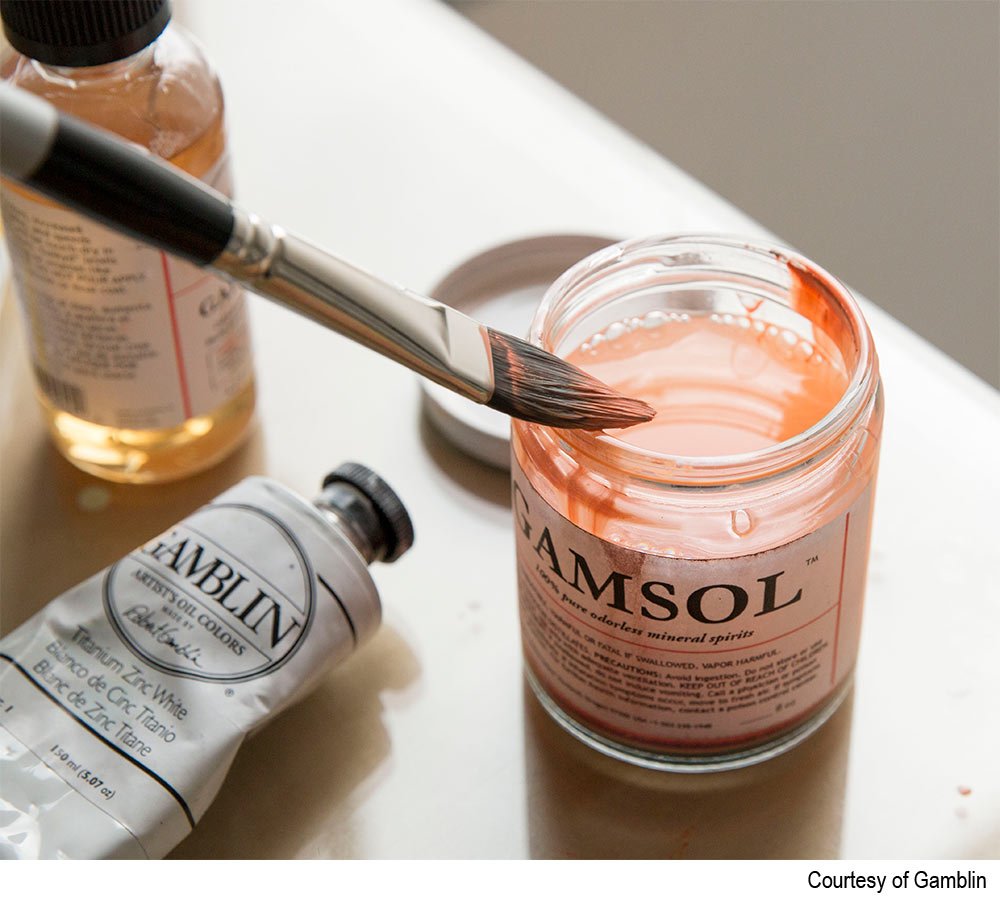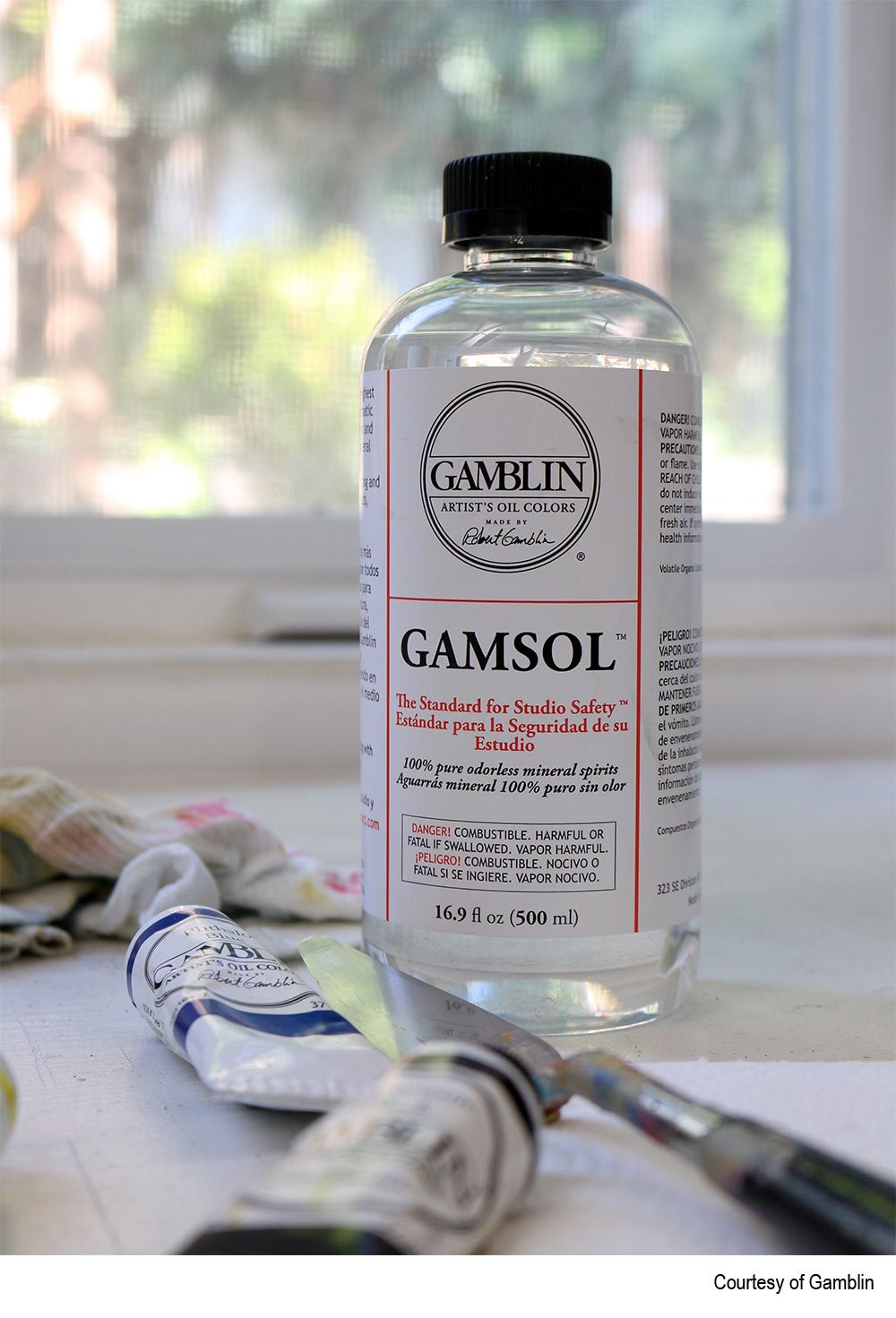Do You Have to Use Turpentine for Oil Painting?
When you think of oil painting, you probably think of smelly studios filled with noxious chemicals. And oil painters of the past certainly had to deal with turpentine as their primary solvent. This hasn’t been without its worries. Mary Weisenburger (Ep.53) of Gamblin points out that turpentine evaporates quickly and has a volatile flashpoint.
But you have many more options today.
To understand your options, first we have to understand categories.
Solvents are the big, overarching umbrella category. Solvents break down the oil in the paint. Sort of like if you pour dish soap into a pan with olive oil in it. It breaks it down. (Although, please do not use dish soap for your pigment clean up)
Under the Solvent umbrella you have (1) turpentine and (2) mineral spirits. Both are solvents and work to break down your pigments to thin pigments for painting purposes or cleaning up purposes.
But, while turpentine is a harsh solvent, there are modern day versions that are much less so. For example, a product like Gamblin’s Gamsol (get it? Gamblin + Solvent), is a mild solvent. It is a low odor mineral spirit that you can use as a turpentine alternative.
Put it to Practice:
If you don’t want to use a solvent, ask yourself how you’re using the solvent. It’s possible an alternative is available.
Thinning your paint?
You could use a medium instead.
Cleaning your brushes?
Look for an oil alternative like safflower for brush cleaning.
When working with any medium, it’s also important to ask yourself what you want in your studio.
What do you want from a health standpoint and from an experience standpoint?
If you love a medium- like oil- but don’t like some of the smells, we live in a really lucky time because it’s very possible you can find alternatives that don’t have the smells
(or have much less of the smells.)
Get as specific as you can about what you’re looking for and then head to the art store to ask the knowledgeable staff or head to google to see if you can find alternatives.
COMMUNITY WISDOM:
“After hosting multiple artist instructors over a ten year period, it's my understanding that mineral oil is a good brush cleaner at the END of a painting session. But it apparently never completely dries and should not be used as a cleaner while painting.”- Sarah Chambers
“Mineral oil or baby oil (Mineral oil with fragrance) does an excellent job of cleaning brushes. It is no toxic. The brushes do get stained however it doesn't effect the next color you use.”- Jay


